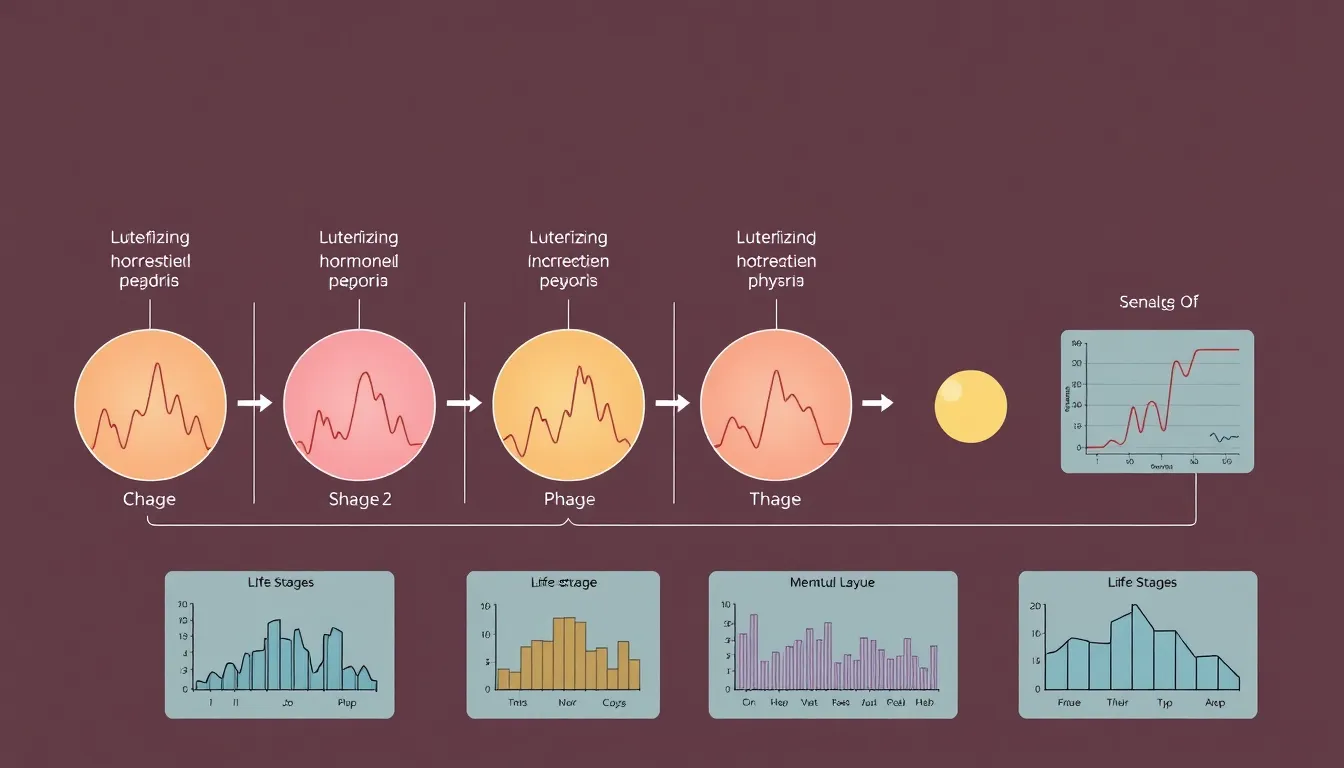Understanding normal LH levels in females might not seem like the most thrilling topic, but it’s crucial for anyone navigating the world of reproductive health. Luteinizing hormone, or LH, plays a starring role in regulating the menstrual cycle and ovulation. Think of it as the coach that ensures everything runs smoothly in the hormone game.
Table of Contents
ToggleUnderstanding LH Levels
Luteinizing hormone (LH) plays a vital role in female reproductive health. Monitoring normal LH levels is crucial for assessing menstrual health and overall reproductive function.
What Is LH?
Luteinizing hormone is a hormone produced by the pituitary gland. In females, LH is responsible for triggering ovulation and regulating the menstrual cycle. During specific phases, LH levels fluctuate, peaking just before ovulation. This peak indicates when the ovaries release an egg, making it a critical component of fertility.
Role of LH in Female Reproductive Health
LH significantly influences various aspects of reproductive health. It helps control ovarian function and contributes to the production of other hormones such as estrogen and progesterone. Balanced LH levels support regular menstrual cycles and facilitate successful conception. Abnormal LH levels can indicate potential issues, such as polycystic ovary syndrome or other hormonal disorders. Monitoring these levels provides valuable insights into a woman’s reproductive status.
Normal LH Levels in Females

Normal luteinizing hormone levels play a crucial role in women’s reproductive health, influencing processes such as ovulation and menstruation.
Age-Related Variations
Luteinizing hormone levels vary significantly with age. In females, prepubescent levels typically range from 0.1 to 0.3 IU/L. During reproductive years, normal LH levels fluctuate between 1.9 and 12.5 IU/L. Postmenopause, they can rise to levels greater than 14 IU/L due to reduced estrogen. Each life stage influences LH levels, reflecting changes in the reproductive system. Regular monitoring of these levels remains important, particularly for younger girls and older women.
Menstrual Cycle Phases
LH levels fluctuate throughout the menstrual cycle, mirroring changes in hormonal activity. In the follicular phase, levels generally range from 1.9 to 12.5 IU/L. The mid-cycle surge, which peaks around day 14, can hit levels between 24 and 105 IU/L and triggers ovulation. Post-ovulation, during the luteal phase, LH levels typically drop to 0.5 to 16.9 IU/L. Understanding these fluctuations aids in assessing ovulation timing, fertility, and potential hormonal disorders.
Factors Influencing LH Levels
Multiple factors affect LH levels in females, including hormonal interactions and lifestyle choices. Understanding these influences helps in assessing reproductive health.
Hormonal Interactions
Hormones like estrogen and progesterone directly impact LH production. The interaction between estrogen and LH is crucial during the menstrual cycle. When estrogen levels peak, they stimulate the pituitary gland to release a surge of LH, initiating ovulation. In contrast, low estrogen levels may lower LH production, affecting overall hormonal balance. Additionally, fluctuations in follicle-stimulating hormone (FSH) also influence LH levels. These hormonal interactions create a complex web that governs female reproductive health.
Lifestyle and Environmental Factors
Lifestyle choices such as diet, exercise, and stress levels influence LH levels significantly. Regular physical activity promotes hormonal balance; excessive exercise can lead to lower LH levels. Additionally, a balanced diet rich in nutrients supports overall hormonal health. Stress, on the other hand, can trigger the release of cortisol, which negatively impacts LH release. Environmental factors, including exposure to endocrine disruptors, can also alter hormonal levels. Being mindful of these lifestyle and environmental aspects plays a vital role in maintaining normal LH levels.
Implications of Abnormal LH Levels
Abnormal LH levels can indicate various reproductive health issues. They may disrupt menstrual cycles or signal underlying hormonal imbalances.
Symptoms of Abnormal Levels
Irregular menstrual cycles often signal abnormal LH levels. Women might experience heavy bleeding or missed periods. Mood swings and unexplained weight changes can also occur. Other symptoms include hot flashes or decreased libido, which may suggest fluctuating hormone levels. Skin changes or increased acne might also arise, indicating a hormonal disturbance. Recognizing these signs is crucial for timely medical intervention.
Potential Health Issues
Persistent abnormal LH levels can lead to health complications. Conditions like polycystic ovary syndrome (PCOS) frequently result from elevated LH levels. Women might also face infertility issues due to disrupted ovulation patterns. Low LH levels may lead to decreased estrogen production, impacting bone health. Additionally, hormonal imbalances can contribute to metabolic disorders. Early detection and management of these conditions can significantly improve reproductive health outcomes. Regular monitoring of LH levels is essential for maintaining overall wellness.
Understanding normal LH levels is essential for maintaining reproductive health in females. These hormone levels fluctuate throughout different life stages and the menstrual cycle, reflecting vital changes in ovarian function and overall hormonal balance. Regular monitoring can help identify potential issues early on, allowing for timely intervention.
By recognizing the signs of abnormal LH levels and their implications, women can take proactive steps toward improving their reproductive health. Lifestyle choices play a significant role in maintaining these levels, emphasizing the importance of a balanced diet, regular exercise, and stress management. Prioritizing hormonal health not only supports fertility but also contributes to overall well-being.




